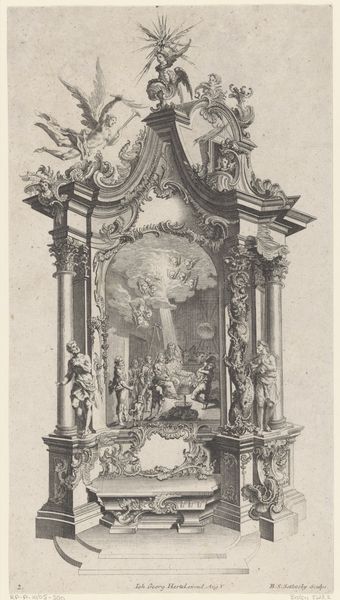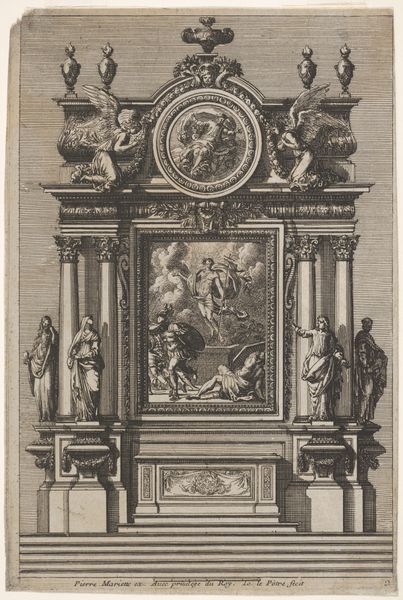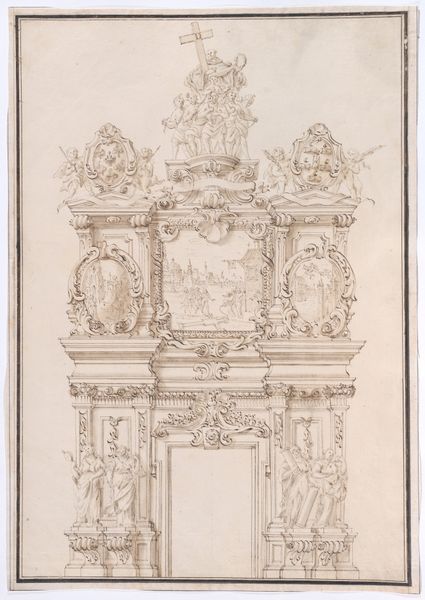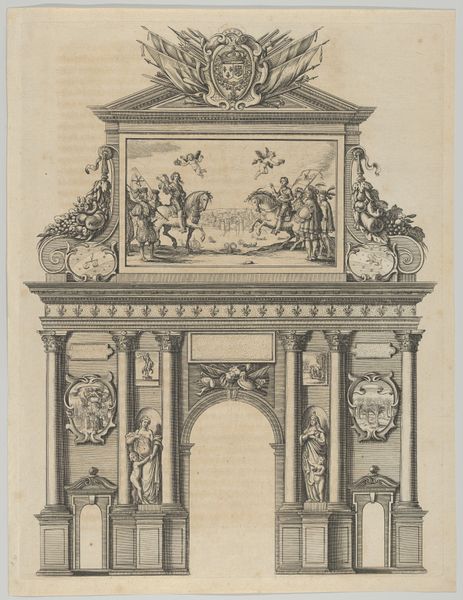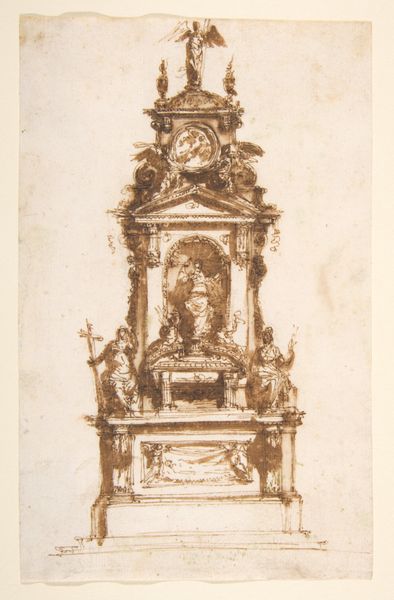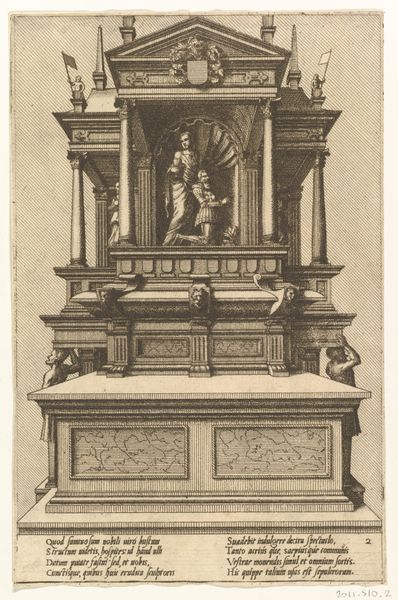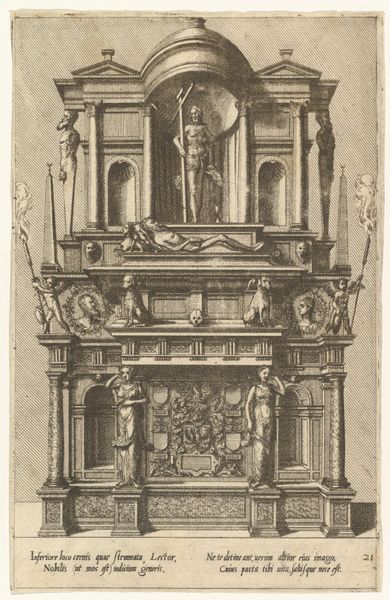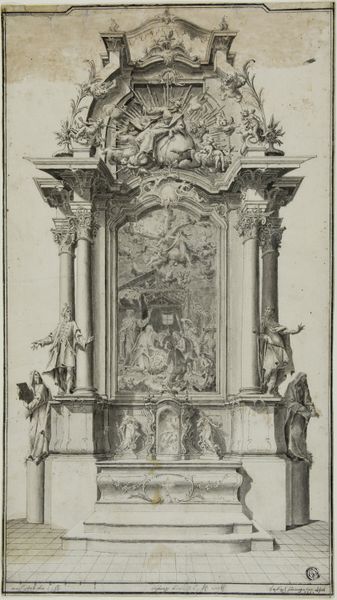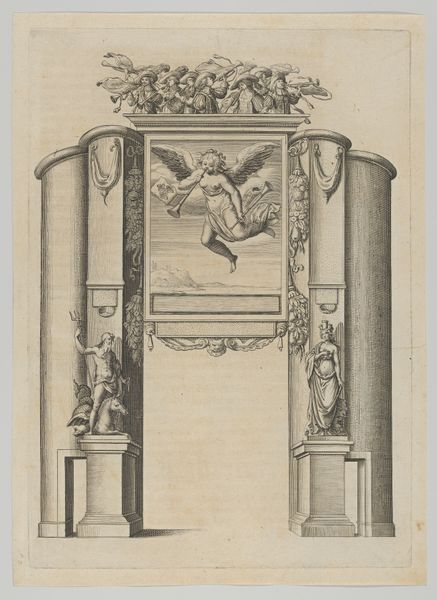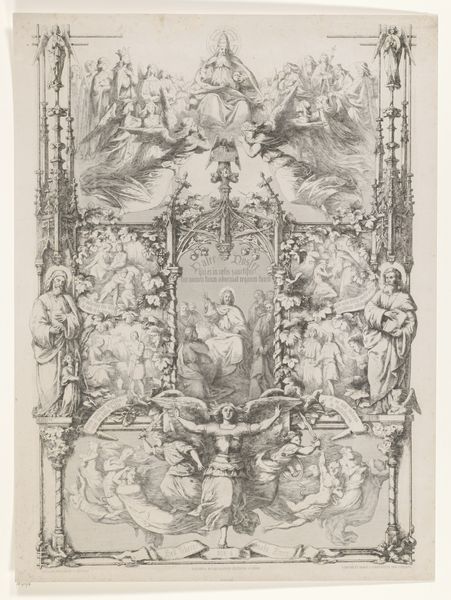
Udkast til et epitafium med Kristi korsfæstelse. En rigt ornamenteret ramme med talrige figurer 1575 - 1625
0:00
0:00
drawing, coloured-pencil, watercolor
#
drawing
#
coloured-pencil
#
watercolor
#
coloured pencil
#
watercolour illustration
#
history-painting
#
early-renaissance
Dimensions: 380 mm (height) x 244 mm (width) (bladmaal)
This is Hieronymus Wierix's "Draft for an Epitaph with the Crucifixion of Christ. A richly ornamented frame with numerous figures," made sometime before the artist's death in 1619. Wierix was working in Antwerp, then part of the Spanish Netherlands, during a period of intense religious and political upheaval. The work reflects the time's deep-seated religious tensions through its intricate depiction of Christ's crucifixion, framed by a wealth of symbolic figures and ornamentation. The image presents a traditional Christian narrative, yet its creation occurred during the Counter-Reformation. The social and political climate influenced Wierix's artistic choices, where religious art served as a powerful tool for reaffirming Catholic doctrine. Consider, as you stand here, how images like these were instrumental in shaping religious identities, and were also a source of comfort and spiritual connection in a tumultuous era. The artist's work evokes the complex interplay between faith, identity, and the socio-political forces that shaped early modern Europe.
Comments
No comments
Be the first to comment and join the conversation on the ultimate creative platform.
